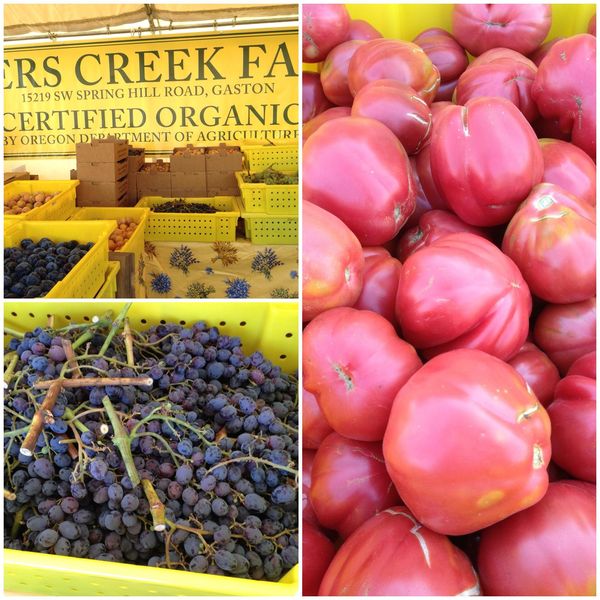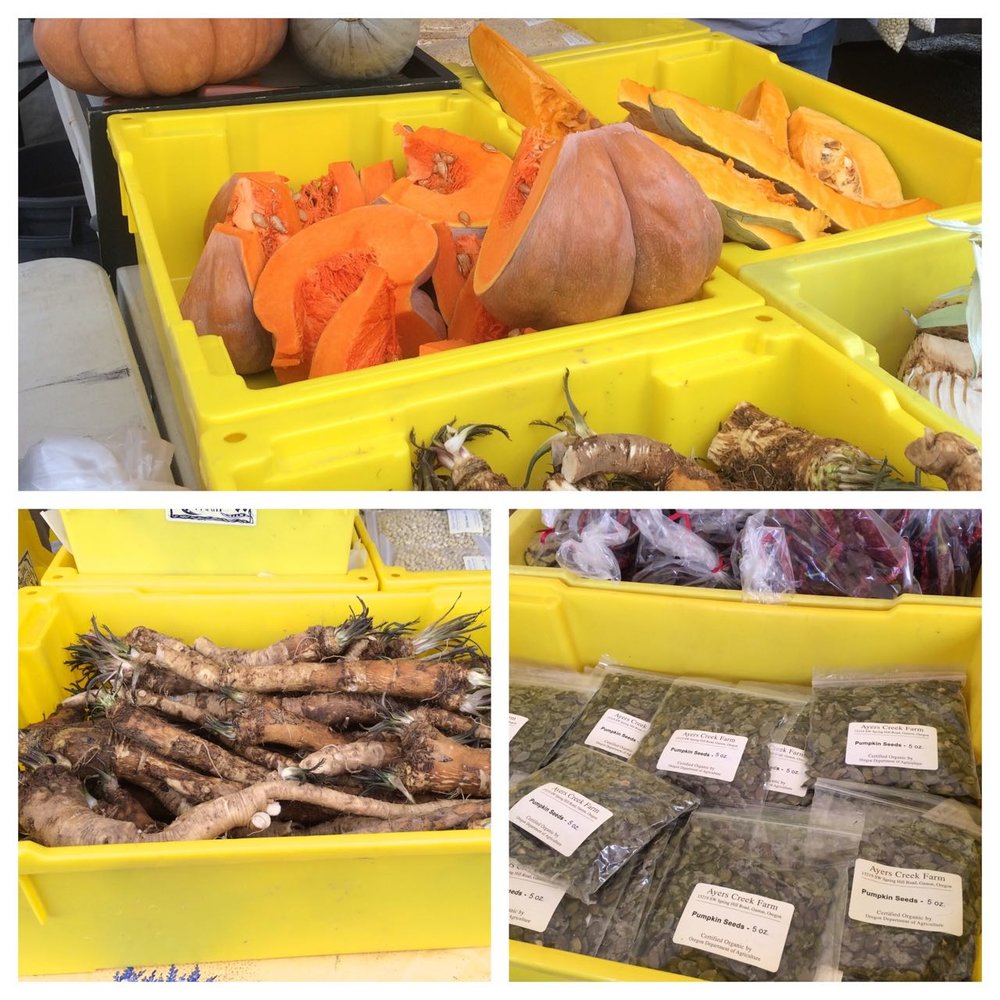Ayers Creek Farm Newsletter 3 August 2014
Guest User

Who would miss the first Hillsdale Farmers' Market following the Lammas? We will be there, ready at 10:00 AM.
This week we will have Chester and Triple Crown blackberries, long red onions and a mixture of cucumbers, frikeh, popcorn, Amish Butter cornmeal and dry favas. The focus will be on the blackberries. We have even purchased smaller scales so we can fit more Chesters in the van, how's that for dedication.
Several years ago, we prepared a pot of favas for a visit by friends. Cooked slowly with a bit of rosemary, garlic and olive oil, and still in their skins. Prior to dinner, we sat down with a drink. They are well-traveled and full of stories. They recounted how they visited a farm in Sicily or maybe the south of France or Spain, little matter. In the midst of all of the beautiful fruits and vegetables growing on the farm, their hosts chose to serve a simple bowl of favas, still in their skins, cooked with bit of rosemary, garlic and olive oil. They thought it peculiar and offhanded. In the midst of all of the beautiful fruits and vegetables growing at Ayers Creek, the two of us exchanged a quick glance and dinner evolved.
For the farmer, favas are a crop that expresses the very elements of the land. They are the most feline of the legumes, scarcely giving a damn how the farmer tends them. Strong-willed, they grow without supplements or irrigation. Lentils and chickpeas are of a similar nature. They are deep rooted and the land rather than the farmer gives them their character. This is perhaps why farmers distant from one another would act similarly as hosts. It is our nod the soil as the ultimate influence on what we produce.
We have a used copy of John Thorne's collection of essays, Outlaw Cook. It is spotless with the exception of the neatly pencilled word "reread" at the beginning of the essay on ful medames. We have obeyed the previous owner's direction, and commend it. The fava, known as ful and variations thereof through the Middle East, is a fragrant and very nourishing legume. We prefer to soak the favas for a couple of days and then cook them. Cook them slowly and gently until the interior is creamy. At this point you can season them in the manner of ful medames, or add a variety of summer vegetables. They are also wonderful roasted or fried so the skin becomes a crunchy contrast to the soft interior. In the winter we roast them with the root vegetables. There is a fascination in the United States with disrobing the poor dear, discarding the skin and keeping just its soft interior. This is the same place that decided that the skin of chicken is somehow unsavory, so they are sold skinless as well. Suit yourself, the flavor of the skin is essential to our enjoyment of the fava and the chicken so, like most other civilized people around the globe, we enjoy both in their fullness.
Incidentally, these favas are a variety that are traditionally dried. They have a beautiful celandine blush, a sweet flavor and a wonderful fragrance. The favas most commonly grown for their fresh pods are awful dry. Even so, not everyone loves favas. It is a defining rather than an acquired taste.
We will see you all Sunday,
Carol and Anthony


